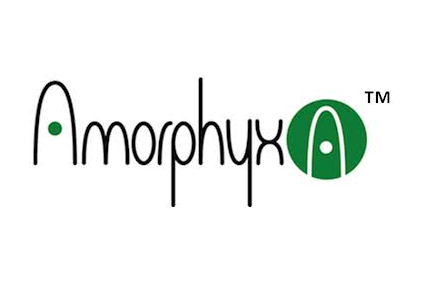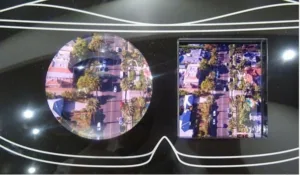Let’s start with Wow. Sharp has been using its hard-earned IGZO expertise in a variety of creative ways, one of which is to use the speedy TFT technology to fabricate gate drivers on the panel at the same time as the switching TFTs are deposited.

The obvious thing to do is simply to fabricate these gate drivers on the edge of the panel, as has been done before with LTPS (and even amorphous silicon for small, low-performance panels). But for its “free-form” automotive panels, which only require one straight edge, Sharp takes the transistors for the gate drivers and distributes them among the pixel switches, thus allowing complete design freedom for the contour of the display, except for that one straight edge.
Early this month at Ceatec, Sharp introduced a 2.87-inch IGZO display with with 1920 x 2160 pixels, for a pixel density of 1008 ppi (Sharp Shows 1000+ ppi For VR and Rounded Corners on LCD – subscription required). This appears to to be the current world record. Sony’s Xperia Z5 mobile handset, introduced last year, boasted 806 ppi, and the Oculus Rift has only 461 ppi.
Sharp said its primary application is VR headsets. At Ceatec, Sharp showed the display naked and also under a strong lens to demonstrate the lack of pixelation in VR applications. (See photo.)
Although Sharp has shown some OLED demonstations over the last couple of years, it has not introduced any OLED products. Although IGZO has been very successful for Sharp in LCDs, it has been troublesome for LG Display in its OLED TV panels. The historically low manufacturing yields for these panels has been due to the IGZO backplanes, not the OLED front planes, LGD has said. Those yields have now improved impressively for 55-inch OLED panels, but the last time I looked LGD had not commented on yields of the larger TV panels.
Which brings us back to Sharp. The Taiwanese giant Foxconn, which bought two thirds of Sharp earlier this year, has made clear that it wants Sharp to make OLED displays. When that happens, they are very likely to have IGZO backplanes.
If Sharp’s 1000-ppi IGZO backplane represents today’s state of the art, a new patent filing by Oregon-based Amorphyx could represent a part of the future.
 Amorphyx has been developing switching devices based on amorphous metal. Until recently, they have been pushing amorphous metal-based nonlinear resistors (AMNRs). The AMNRs act as diode switches whose operating principal is a kind of quantum tunneling rather than controlled conduction as is the case with silicon TFTs. Amorphous metals have advantages over silicon, including insensitivity to light and low sensitivity to temperature. But diodes require a different driving approach to transistors, and panel manufacturers have seemed hesitant to make that leap.
Amorphyx has been developing switching devices based on amorphous metal. Until recently, they have been pushing amorphous metal-based nonlinear resistors (AMNRs). The AMNRs act as diode switches whose operating principal is a kind of quantum tunneling rather than controlled conduction as is the case with silicon TFTs. Amorphous metals have advantages over silicon, including insensitivity to light and low sensitivity to temperature. But diodes require a different driving approach to transistors, and panel manufacturers have seemed hesitant to make that leap.
Now, Amorphyx has announced a patent filing for an amorphous metal hot electron transistor (AMHET). Like the AMNR, the AMHET uses Fowler-Nordheim quantum tunneling and, says Amorphyx, “eliminates the need for semiconductor-based transistors in small-scale integration of digital and analog circuits.” Amorphyx claims dramatic improvements relative to silicon in switching speed, electronic noise, sensitivity to light and temperature, and cost of fabrication.
The company says it plans to commercialize AMHET technology is four phases, the first of which will be driver-on-glass row and column drivers, “in combination with the AMNR-LCD backplane.” The second phase, says Amorphyx, will be combining AMHET driver-on-glass circuits with AMHET pixel switches, replacing TFTs “and enabling mass production of large- and small-area flexible substrate displays.”
Very interesting. But remember: This is just a patent filing. It could be a long time before we see an OLED demonstration panel based on AMHET technology. In the meantime, we can have our reality virtualized at 1000 ppi. – Ken Werner
Ken Werner is Principal of Nutmeg Consultants, specializing in the display industry, manufacturing, technology, and applications, including mobile devices and television. He consults for attorneys, investment analysts, and companies re-positioning themselves within the display industry or using displays in their products. You can reach him at [email protected].

